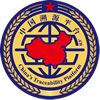- 首页
- Product
- Case
- Fabrication
-
Video
- News
- About Us
-



-

-
 中溯平台登录
中溯平台登录
The label market is projected to grow at a compound annual growth rate of 2.8% 2023-10-31 11:21:43
According to the latest report by Smithers on the Future Development Trends of the Global Label and Release Paper Market in 2028, as of 2023, pressure sensitive labels have the largest market share, accounting for approximately 45% of the total label market share; According to the usage quantity, the alcohol and beverage market is the largest application market for labels, accounting for approximately 30% of the total market share of labels; Flexographic printing is currently the most widely used printing process for label printing, accounting for approximately 40%.
Affected by the COVID-19, the label market suffered from a sharp decline in demand between 2020 and 2021, but the market has quickly recovered its lost value, and the market's demand for release paper labels, shrink sleeve labels and stretch sleeve labels has continued to grow. According to Smithers' prediction, based on constant pricing, the sales of labels will grow at a compound annual growth rate (CAGR) of 2.8%, reaching $49.73 billion by 2028. During the same period, sales will grow at a compound annual growth rate (CAGR) of 3.5%, reaching 93 million square meters by 2028. Faced with such a large market demand, label printing companies can generate new revenue through extensive innovation.
At present, sustainability has become a focus of attention for the entire printing and packaging industry. In recent years, we can see that the industry has increased investment in technological innovations such as paper label paper, polymer substrates made from post consumer recycled (PCR) plastics, bottomless paper labels, bio based inks, and allowing for effective removal of label materials during the recycling process.
In addition, some regulatory authorities also require future labels to carry more product information. It is reported that the United States will follow the example of the European Union and issue drug traceability requirements in November 2023. Other serialization requirements that require commodity level tracking codes will soon take effect, especially in the food and beverage industry, where it is obligated to display more product information on labels, including allergen warnings and healthy dietary information.
Of course, these factors have also become the driving force for adding more anti-counterfeiting features to labels to prevent product counterfeiting. Brand owners can establish connections with consumers through intelligent technologies such as QR codes for specific products, which is also a value-added model that label printing companies can utilize. When these anti-counterfeiting functions can be integrated with digital platforms, seamlessly connected, and achieve online experience, enterprises can achieve maximum profits.
In order to gain a deeper understanding of the industry, Smithers analyzed the label segmentation market from multiple aspects such as label types, label materials, and printing methods.
Of course, these factors have also become the driving force for adding more anti-counterfeiting features to labels to prevent product counterfeiting. Brand owners can establish connections with consumers through intelligent technologies such as QR codes for specific products, which is also a value-added model that label printing companies can utilize. When these anti-counterfeiting functions can be integrated with digital platforms, seamlessly connected, and achieve online experience, enterprises can achieve maximum profits.
From the perspective of label materials, glass fiber and matte kraft paper are still the main materials for release paper labels, accounting for 36.5% of the demand, but this share will slightly decrease in the next five years. Considering the development of technology, the usage of film and polyolefin coated release paper will increase.
From the perspective of printing methods, based on sales area, flexographic printing is currently the most widely used printing process in the label industry, accounting for 39.6%; Offset printing ranks second, accounting for 28.1%. The fastest growing industry is narrow format digital printing (including hybrid printing configurations), and according to Smithers Smithers analysis, digital printing will achieve significant growth at a compound annual growth rate of 12.3% by 2028.
Source: Keyin Network
2024年5月24日,我司长期战略合作伙伴广东省九江酒厂有限公司领导一行莅临众能科技园进行参观交流。本次参观交流不仅进一步增加对珠海众能印刷有限公司了解,更是双方深化多元合作、共同探索未来合作新模式的重要起点。公司总裁许伯生先生和销售一部车总监对九江酒厂领导们的到访表示热烈欢迎,并感谢九江酒厂长期以来在工作
产学研合作-华中科技大学2023年2月7日,华中科技大学、国家防伪工程技术研究中心尤新革主任莅临公司指导工作。公司总裁许伯生先生、副总裁杨振杰先生,研发中心总监刘海清先生等对尤主任到访表示热烈欢迎同时对华中科技大学给予的长期支持表示深深的感谢。华中科技大学与众
01行业数据012023全球包装印刷市场规模达4405亿美元Reportlinker发布的《2023全球包装印刷市场》报告显示,全球包装印刷市场从2022年的4122.7亿美元增长到2023 年的4405亿美元,复合年增长率为6.8%。受俄乌冲突的影响,商品价格飙升、供应链中断造成商品和服务的通货膨胀,影响了全球许多市场。预计到2027年,包装印刷市场将
 联系手机:19966308713
联系手机:19966308713
 座机号码:0760-86630003
座机号码:0760-86630003
 business@joinet.com.cn
business@joinet.com.cn
 微信咨询
微信咨询

